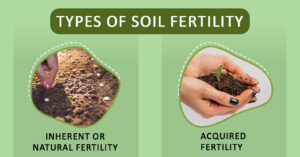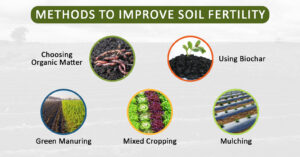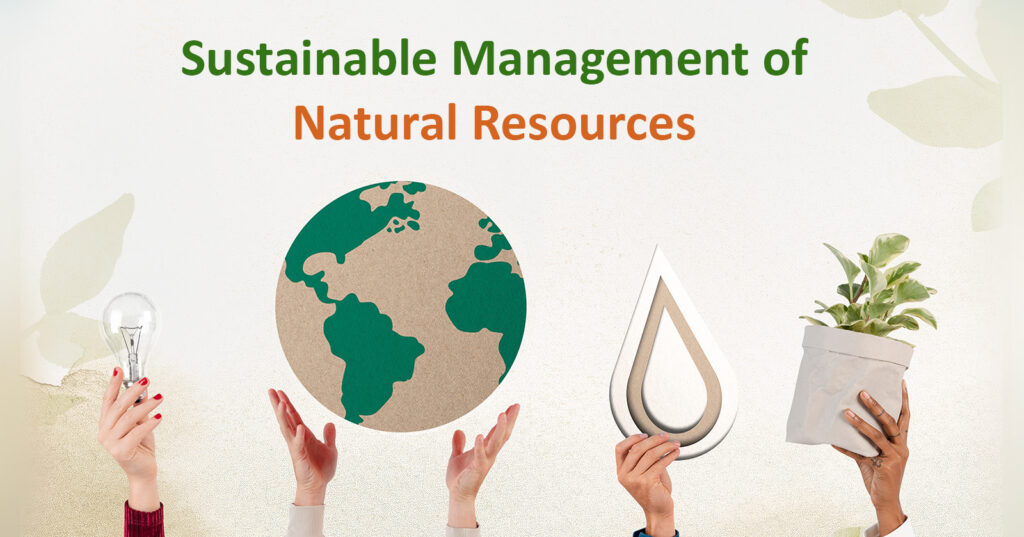The ability of any soil to sustain the growth of plants and maximizing the crop yield is called soil fertility. Over the last few decades, the requirement for sustainable practices in the agricultural field has become prominent. Although there are multiple ways to increase soil fertility through artificial supplements, there is a need to understand why it is important to move towards sustainable agriculture practices.
Moving towards sustainable practices means increasing the fertility of the soil, growing high-yielding crops and healthier plants, all while keeping the well-being of the environment in mind as well. Let’s understand the relationship between soil fertility and sustainable farming, how it impacts crop nutritional value, and how we can implement eco-friendly practices to promote soil fertility.
The Role of Soil Health in Sustainable Farming
Sustainable farming relies on the health and condition of the soil, which provides essential nutrients for plant growth, retains water, and fosters a suitable microbial community. A healthy soil enables farmers to adopt sustainable practices confidently, leading to high yields, quality crops, and nutritionally rich grains.
Effective soil management helps maintain soil fertility, improve crop yield, and support long-term agricultural sustainability.
The focus of sustainable farming is on long-term soil health, with a significant emphasis on preserving and promoting microbial activity. These microorganisms play a crucial role in decomposing organic matter, distributing nutrients, and supporting overall soil development.
Types of Soil Fertility

When we talk about Soil fertility there are 2 ways a soil can become fertile. Either the soil can be inherently fertile or it can acquire fertility through various external methods.
Inherent or Natural Fertility: Soil in nature generally contains some nutrients to support crop and plant growth which is called the inherent fertility of. These nutrients in soil are generally limited which are there to keep fertility from failing.
Acquired Fertility: This type of fertility is achieved through multiple external methods like the use of manure and fertilizers, tillage, irrigation and many other factors.
This type of fertility is also limited as in a study it’s found that adding more than the required amount of fertilizers or manure doesn’t add any nutritional value to soil fertility.
How does soil fertility impact crop nutritional value?
There is a direct impact of soil fertility on the nutritional value of crops. A fertile soil accumulates and provides all the essential nutrients, such as nitrogen, phosphorus, potassium, calcium, magnesium, and micronutrients, to the plants.
Maintaining a balanced supply of these nutrients ensures their proper absorption by the crop, resulting in higher nutrient levels in the final crop. Soil management plays a key role in preventing erosion, improving water retention, and reducing the need for chemical fertilizers.
Farmers often lean towards using nitrogenous chemical fertilizers to achieve higher soil nutrient levels to promote crop growth. However, it is crucial to make sure there is a balance when using these fertilizers. Excessive use of these chemical fertilizers not only leads to soil degradation but can ultimately lead to environmental pollution. Using organic compost and manure not only enhances the nutritional value of the crops but also supports long-term soil health.
Methods to Improve Soil Fertility

While there are numerous ways we can increase soil fertility, choosing the correct way is necessary to make sure the health of the soil is not compromised in the process of making it more fertile. Some of the ways that we can adopt are:
- Choosing organic matter: The best method to increase soil fertility is to use organic matter. Organic matter doesn’t affect the soil health while increasing the fertility of the soil.
- Using Biochar: Biochar changes the physicochemical properties of the soil, increasing fertility by adding direct nutrients to the soil. It serves as a stable carbon source for the soil while providing proper aeration.
- Green Manuring: Green manure crops prepare soil for successive plantings by absorbing and storing nutrients. Soil fauna, including various species and microorganisms, thrive on green manure as a constant food source.
- Mulching: Mulching is the process of spreading mulch over the crop for soil moisture conservation. It reduces the weed growth in the soil.
- Mixed Cropping: It is the process of sowing multiple crops in the same area to prevent soil erosion. This also makes sure the pest infestation is minimized and the soil is utilized properly.
Implementing Eco-Friendly Practices to Enhance Soil Fertility
As we move forward in the future, the need for the adoption of sustainable farming practices becomes more prominent. One such approach or practice to enhance soil fertility is the integration of compost and organic manure into farming practices. The use of organic fertilizers improves the nutrient composition in the soil, improves soil structure, and enhances water retention.
By focusing on the use of organic fertilizer and eradicating the use of chemical fertilizers, we not only move towards a sustainable environment but also increase soil fertility and ultimately improve crop production.
Debunking Common Myths About Soil Fertility
As farmers move towards sustainable practices to improve their soil health, myths about soil fertility often circulate, leading to confusion about the best practices for growing healthy plants or crops. Let’s debunk some misconceptions surrounding soil fertility, highlighting the role of organic compost fertilizer and the importance of soil nutrients.
Myth 1: Chemical fertilizers are superior to organic compost.
Reality: Organic compost fertilizers provide an overall improvement in soil health, promoting microbial activity and improving long-term soil health.
Chemical fertilizers may offer quick fixes, but they can harm beneficial soil microorganisms and disrupt the natural balance.
Myth 2: All soils need the same nutrients.
Reality: Soil nutrient requirements depend on factors like climate, crop type, and soil composition. Conducting soil tests is crucial to determining the specific nutrient needs of your soil and ensuring precise and effective fertilization.
Myth 3: Adding more fertilizer boosts plant growth.
Reality: Excessive use of chemical fertilizer can lead to nutrient imbalances, negatively impacting plant health. Organic compost fertilizer releases nutrients slowly, preventing over-fertilization and supporting sustainable plant growth.
Myth 4: Fertilizing once is enough for the entire season.
Reality: Soil nutrient levels change throughout the growing season. Regular monitoring and timely application of organic compost fertilizer help maintain a consistent supply of nutrients, ensuring regular plant nutrition.
Debunking these myths highlights the significance of adopting organic fertilizer. By understanding what soil fertility is and why and how we should manage nutrition in soil, all farmers can grow high-yielding crops using sustainable farming practices.
Role of Microorganisms In Soil Fertility
Soil microorganisms and biodiversity play a big role in improving soil fertility. They help break down organic matter into nutrients that plants can use. This process is called mineralization.
For example, nitrogen-fixing bacteria living in the roots of legume plants convert nitrogen from the air into useful forms like ammonia, nitrite, and nitrate, which help plants grow.
Microorganisms also make other important nutrients like phosphorus, potassium, iron, and boron available to plants by breaking them down from minerals or organic materials.
Iron is an essential nutrient for crops. Some microorganisms release special compounds like siderophores and organic acids that help dissolve iron in the soil, making it easier for plants to absorb.
Similarly, microorganisms break down organic matter in the soil, releasing boron, another nutrient needed for healthy plant growth.
Final Thoughts
Maintaining soil health serves as the core of sustainable agriculture practices. Understanding the function of soil fertility, applying eco-friendly methods, and embracing natural agriculture practices can contribute to creating a healthier planet.
Soil nutrients are essential for plant growth, helping crops develop strong roots, healthy leaves, and higher yields. Farmers and consumers can participate in the transition to a greener, more sustainable future by addressing myths about organic farming and seeking expert guidance on nutrient-related problems.
Frequently Asked Questions
Question: How can I improve soil fertility naturally?
Answer: Incorporating organic compost fertilizers, cover cropping, and crop rotation are effective natural methods to enhance soil fertility.
Question: Is humic acid fertilizer safe for the environment?
Answer: Humic acid fertilizers are generally considered safe when used in moderation. They can improve soil structure and nutrient availability without causing environmental harm.
Question: Are nitrogen fertilizers necessary for all crops?
Answer: While nitrogen is crucial for plant growth, it’s essential to tailor fertilizer application to specific crop needs. Excessive use can lead to environmental issues, so a balanced approach is key.
Question: What is soil fertility?
Answer: Soil fertility is the soil’s ability to support plant growth and provide the essential nutrients crops need to grow healthy and strong.
Question: Why is soil fertility important for sustainable farming?
Answer: Healthy, fertile soil helps farmers grow more crops naturally, reduces the need for harmful chemicals, and protects the environment for future generations.








